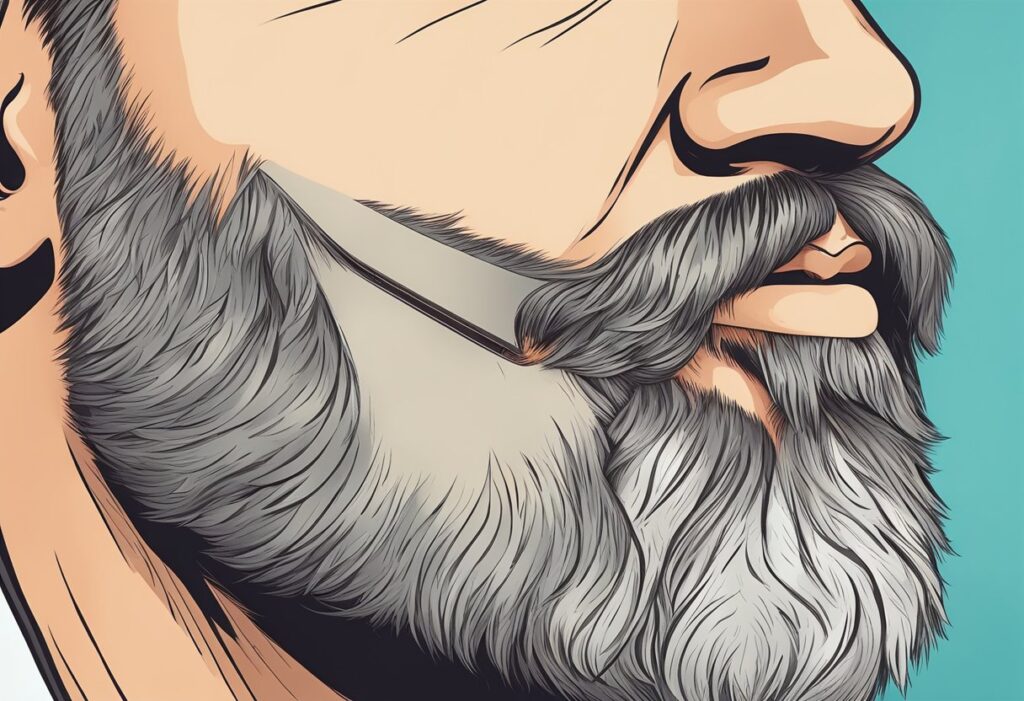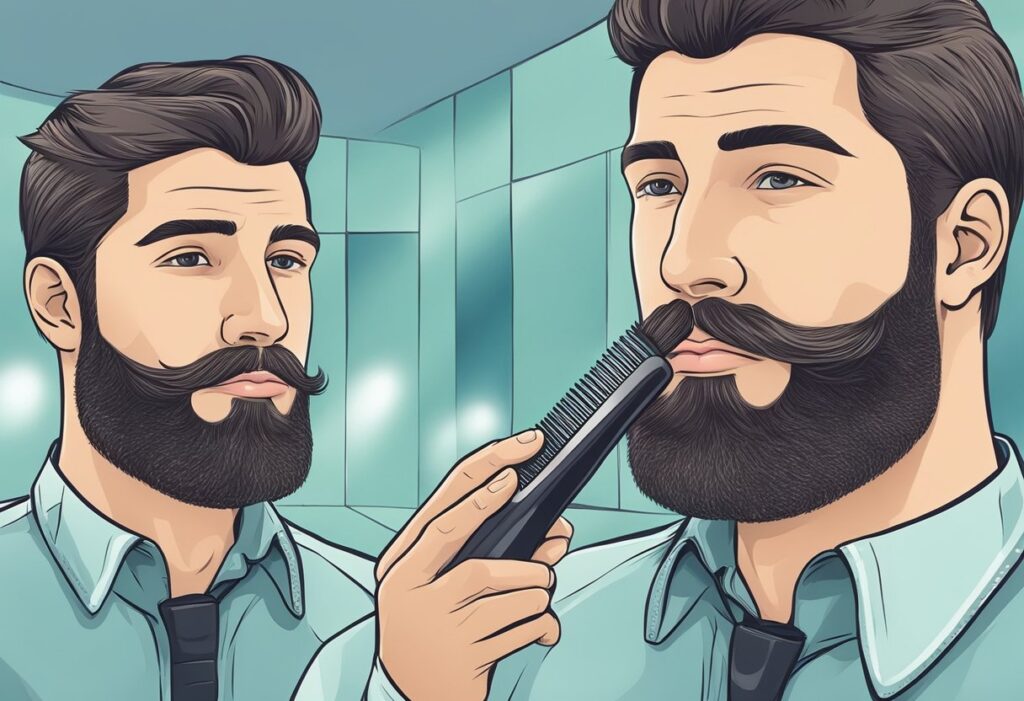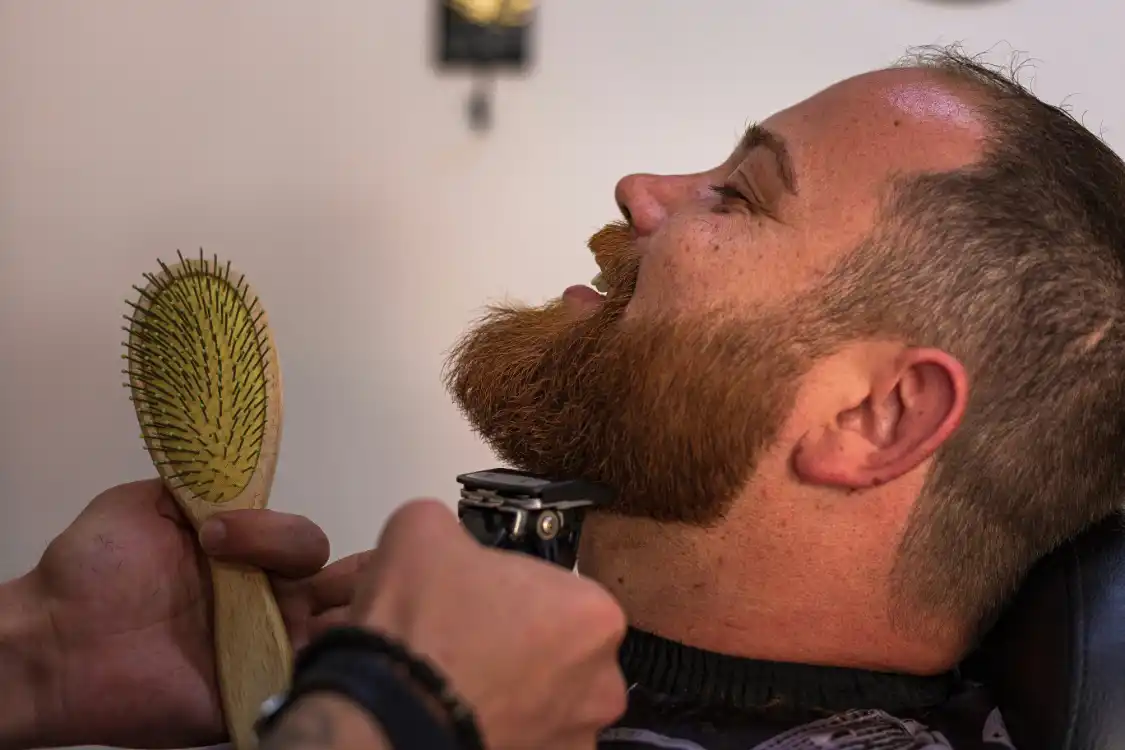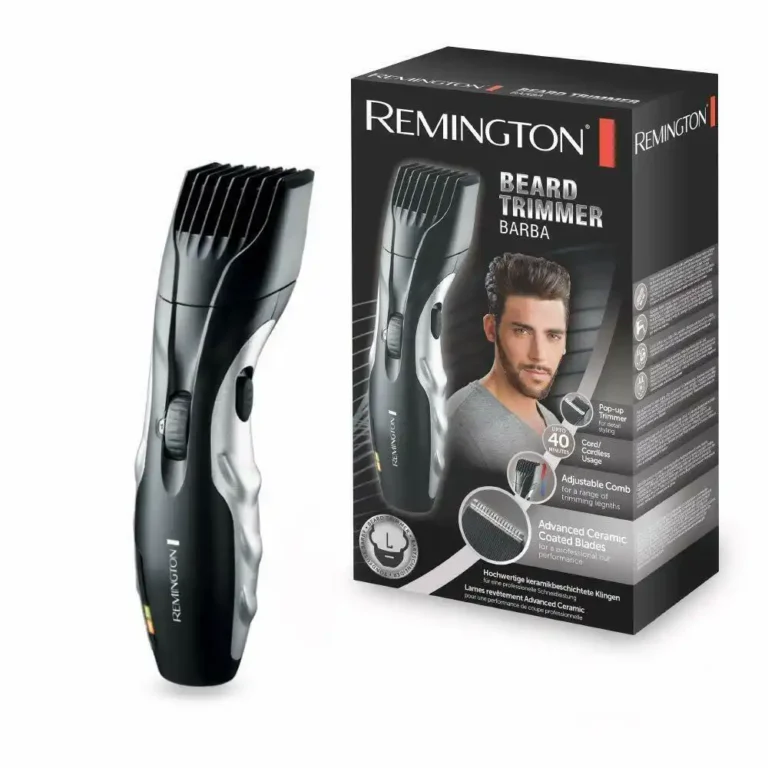This post may contains affiliate links.
We have all seen the movie stars with the perfect beard line. Looking sharp and powerfull. Crafting the perfect beard line can elevate your grooming game and ensure your facial hair looks well-defined and polished.
Finding the right beard line involves determining the ideal boundary between your beard and the exposed skin on your cheeks and neck. This crucial aspect of beard grooming enhances the natural shape of your face, creating a more structured and intentional look.

To locate your beard line with precision, start by assessing the natural growth patterns of your facial hair. Identify the areas where your beard meets your cheeks and neck to achieve symmetry and balance in the overall appearance. This fundamental step in beard grooming not only defines your look but also helps maintain a neat and tidy style over time.
Regular maintenance is key to keeping your beard line sharp and clean. Use a quality trimmer or razor to follow the contours established in your initial grooming session. By consistently maintaining your beard line, you’ll ensure your facial hair remains attractive and well-kept, making a strong impression in both casual and professional settings.
Understanding Your Beard Line

Finding your beard line requires attention to your natural hair growth and face shape. These factors guide you in creating a balanced and complementary look.
Identifying Your Natural Beard Line
Your natural beard line is determined by the area where your facial hair grows most densely. To find it, let your beard grow for a few days without shaving or trimming. This allows you to see the natural boundary of your beard.
Focus on areas such as your cheeks and neck. The highest density of hair growth on these parts will guide you. Pay close attention to the natural lines your beard forms around your jawline.
Plucking a few stray hairs will give you a cleaner line. Avoid shaving too high on your cheeks or too low on your neck, as this can disrupt the natural look.
Facial Shape and Beard Line Correlation
Face shape plays a significant role in determining where your beard line should be. An angular or square face shape might benefit from a beard line that slightly curves along the natural jawline. This enhances the strong jaw structure.
For oval faces, a straighter beard line can help elongate the face. Conversely, round faces can appear more angular with a well-defined, higher beard line. This gives the illusion of a more structured jawline.
Adjust your beard line based on your face shape to achieve the most flattering look. Specific face shapes may require different approaches to highlighting your features.
Preparation for Trimming

To achieve a precise and clean beard line, preparation is key. Make sure you have the necessary tools and take the time to properly cleanse and prep your skin.
The Right Tools for the Job
Using the correct tools is essential. A beard trimmer with adjustable settings is ideal for shaping. A fine-toothed beard comb helps detangle and align hairs.
Small scissors can trim stray hairs that are difficult to reach with a trimmer. Ensure your trimmer is fully charged or has fresh batteries to avoid interruptions. An exfoliant is also useful for removing dead skin cells that can trap hair.
Having a mirror with good lighting ensures you can see your beard line clearly.
Cleansing and Prepping Your Skin
Always start by washing your face with a gentle facial cleanser to remove dirt and oil. This lays a clean foundation.
After cleansing, use an exfoliant to scrub away dead skin cells. This reduces the likelihood of ingrown hairs.
Rinse thoroughly with warm water to soften the hair follicles. Applying a light moisturizer keeps your skin hydrated and smooth, making trimming easier.
Dry your face completely before picking up your trimmer or scissors.
Trimming Techniques for a Defined Beard Line

To achieve a well-defined beard line, focus on setting the initial line, shaping the neckline, and refining for symmetry. Use tools like mirrors and razors to ensure precision in each step.
Setting the Initial Line
Start by defining the top line of your beard. Use a mirror for accuracy. The line should run from the edge of your sideburns to the corners of your mouth. A straight or slightly curved line looks best.
Using a trimmer, outline this line. This creates a strong boundary for your beard. Make sure both sides are symmetrical. If necessary, use small, controlled movements to adjust.
Maintaining this line requires regular touch-ups. Use the same method each time to keep it consistent.
Shaping the Beard Neckline
Shaping your beard neckline correctly is essential. Locate your Adam’s apple as a reference point. Place two fingers above the Adam’s apple and use this spot to set the lowest point of your beard.
Create a U-shaped curve from this point to your ears. This defines your neckline. Use a razor to shave everything below this line. Make sure to check it from different angles in the mirror to avoid unevenness.
Trim your beard neckline regularly to maintain this shape. A defined neckline enhances the structure of your beard.
Refining the Beard Line for Symmetry
Symmetry is key for a polished look. Stand directly in front of the mirror and assess both sides of your face. Adjust the beard line if needed to ensure symmetry.
Use precise trimmer settings to fine-tune your beard. Focus on small sections and make minor corrections. Pay extra attention to the areas around the corners of your jawline and mouth.
Regular maintenance is crucial for keeping your beard line symmetrical. Frequent checks in the mirror will help you catch any imbalances early.
Post-Trimming Care and Maintenance

Taking care of your beard after trimming is essential to avoid irritation and maintain a healthy look. Focus on soothing your skin immediately after trimming and establish a daily care routine to keep your beard in top condition.
Soothing Your Skin After Trimming
After trimming, your skin may feel irritated. Start by rinsing your face with cold water to close pores and reduce potential bumps. Apply an alcohol-free aftershave to prevent drying out your skin.
Consider using beard oil or beard balm to moisturize and prevent ingrown hairs. These products help in softening hair and reducing itchiness. Avoid products with harsh chemicals that could worsen irritation.
Gently massage your skin to improve blood circulation. Try to avoid scratching the trimmed area to prevent further irritation. If you experience persistent bumps or ingrown hairs, use a gentle exfoliating wash to clear out the pores.
Daily Beard Care Routine
A consistent daily beard care routine keeps your facial hair looking sharp and healthy. Start by washing your beard with a quality beard conditioner to keep it hydrated. Avoid regular shampoos as they can strip away natural oils.
Use a beard oil to nourish the hair and skin underneath. It’s important to apply it evenly using your fingers or a comb. For a more structured look, use beard balm to maintain shape and provide a slight hold.
Always use a comb to detangle the hair and prevent knots. This also evenly distributes the oil. Routine grooming like this helps in avoiding ingrown hairs and irritation. Stick to this regimen to keep your beard well-maintained and comfortable daily.
Professional Touch and Advanced Techniques

Achieving a perfectly sculpted beard line involves professional assistance and refined grooming methods. Whether you seek a barber’s expertise or aim to master advanced techniques yourself, precision and the right tools are essential.
Visiting a Professional Barber
A professional barber provides expertise that results in a consistently defined line. Your barber can analyze your facial structure and beard growth patterns to recommend the most flattering beard styles.
During the visit, barbers use specialized trimming tools and beard scissors to ensure sharp lines and symmetry. They can also create intricate styles, such as a fade that transitions smoothly from a fuller beard to a clean-shaven look. Regular visits help maintain the desired look and address any issues with uneven growth or shape.
Advanced Grooming for Distinct Styles
If you prefer to groom at home, mastering advanced techniques is vital for a well-defined beard line. Start by selecting high-quality trimming tools, such as adjustable clippers and precision trimmers.
Use a mirror with magnification to ensure accuracy. Beard scissors help in snipping stray hairs and achieving a polished look. For distinct styles like a sharp fade or an artistic sculpt, invest time in learning and practicing these techniques. Patience, steady hands, and attention to detail will yield professional-looking results at home.
Frequently Asked Questions
This section addresses common inquiries about achieving a well-groomed beard line, with specific techniques and guidelines for shaping both the neckline and cheek line as well as correction methods.
What’s the proper technique for shaping a beard neckline?
To shape your beard neckline, visualize a curved line that follows the angle of your jawline, starting from ear to ear. Ensure the line sits just above your Adam’s apple for a natural look. Use a trimmer to define this line and then clean up the area beneath it.
Where should the beard cheek line be for a balanced look?
The beard cheek line should ideally follow the natural line from your sideburns to the corner of your mouth. Use a straight edge or a beard template to help you line up correctly and trim any hair that falls above this line.
How can I fix a beard neckline that’s too high or too low?
If your neckline is too high, allow the hair to grow back and reset the line lower. For a neckline that’s too low, trim the hair at the correct position above the Adam’s apple and be patient as the new line fills in.
What are the best methods to line up the corners of a beard?
To achieve sharp corners on your beard, use a trimmer with a precision guard. Define the point where the cheek line meets the neckline and trim carefully to create a clean angle. You might also use a razor for sharper definition.
How should I request a professional beard line up at a barbershop?
When requesting a beard line up at a barbershop, communicate clearly by indicating where you want the neckline and cheek line. Demonstrate with your fingers or bring a photo for reference. Ensure your barber knows your style preferences to tailor the trim to your liking.
What are the guidelines for creating a short beard neckline?
For a short beard, maintain the neckline just above the Adam’s apple. This keeps a clean, neat appearance. Regularly trim both the neckline and the area beneath it to prevent stubble from creeping up, which keeps the beard looking sharp and well-groomed.



